In 1965, after the last aluminum panels were installed on its 140-foot dish, this giant radio telescope moved for the first time. This was our third major telescope in our Green Bank facility, and it is still working today under a more modern name, the 43-meter.
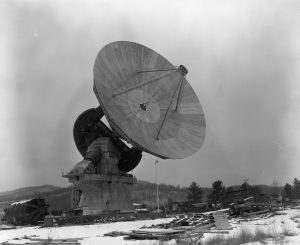
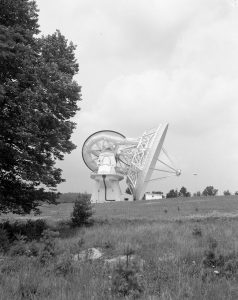
New Telescope Takes a Bow
When the 140-foot telescope was completed in Green Bank, West Virginia in 1965, it was soon painted a brilliant white. Radio telescopes are painted white in order to scatter sunlight away from the receivers and keep as little solar radiation as possible from warping the painstakingly accurate surface shapes. This telescope, now renamed the 43-meter, is still in operation.
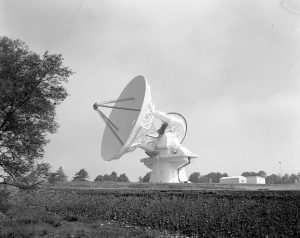
Shiny White 140-foot Telescope
When the 140-foot (43-meter) telescope was completed in Green Bank, West Virginia in 1965, it was soon painted a brilliant white. Radio telescopes are painted white in order to scatter sunlight away from the receivers and keep as little solar radiation as possible from warping the painstakingly accurate surface shapes.
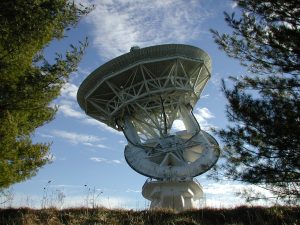
Still Working After All These Years
The 140-foot telescope in Green Bank, West Virginia was completed in 1965 and has been a very busy instrument ever since. It discovered several organic molecules in space, tracked satellites whizzing overhead, and studied pulsars among many other projects. Currently, renamed the 43-meter, it is a ground station for the world’s only orbiting radio telescope, Spektr-R.

A Mouthful
The 140-foot telescope in Green Bank gets an upgrade as its prime focus is swallowed by the receiver tower. Inside the tower, an engineer is installing fiber optic control devices that allows the small reflecting mirror in the cage to be adjusted very precisely. This helps it to better aim its focused radio waves onto the receivers nestled in the middle of the 43-meter dish.
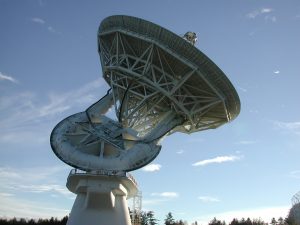
Late Afternoon at the 140-foot
Looking south at the 140-foot (43-meter) telescope on a gorgeous summer afternoon in Green Bank, West Virginia.





